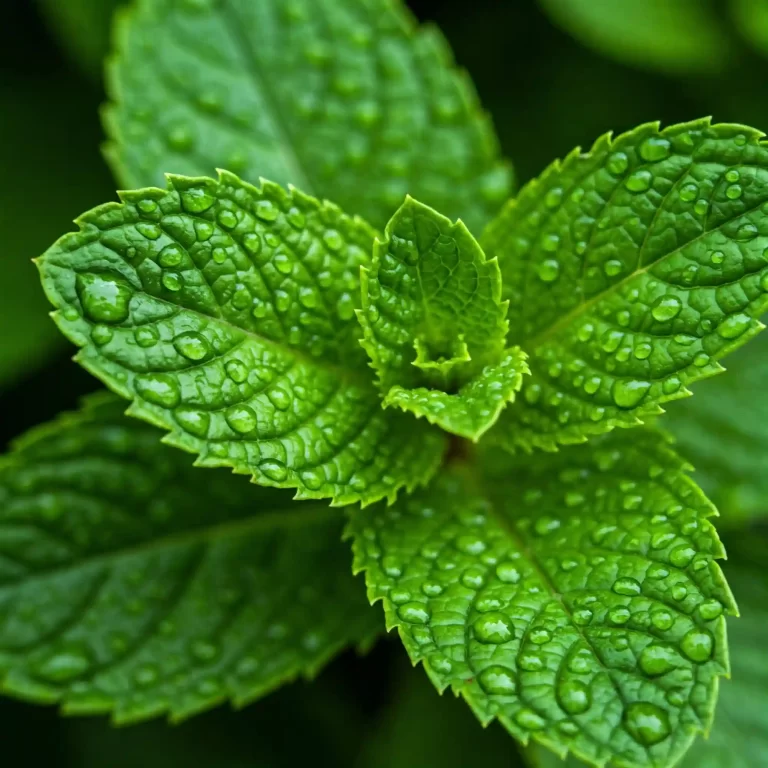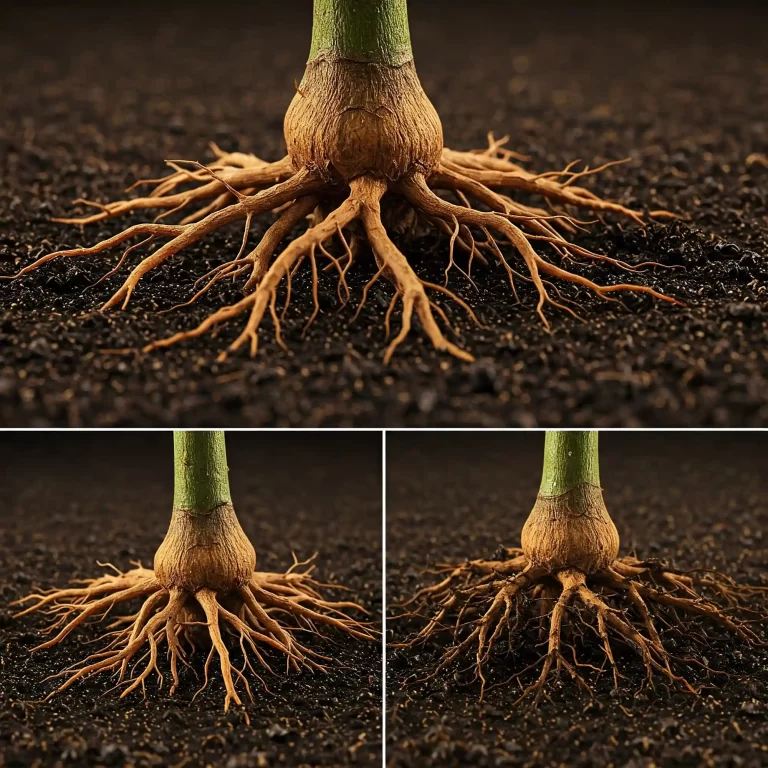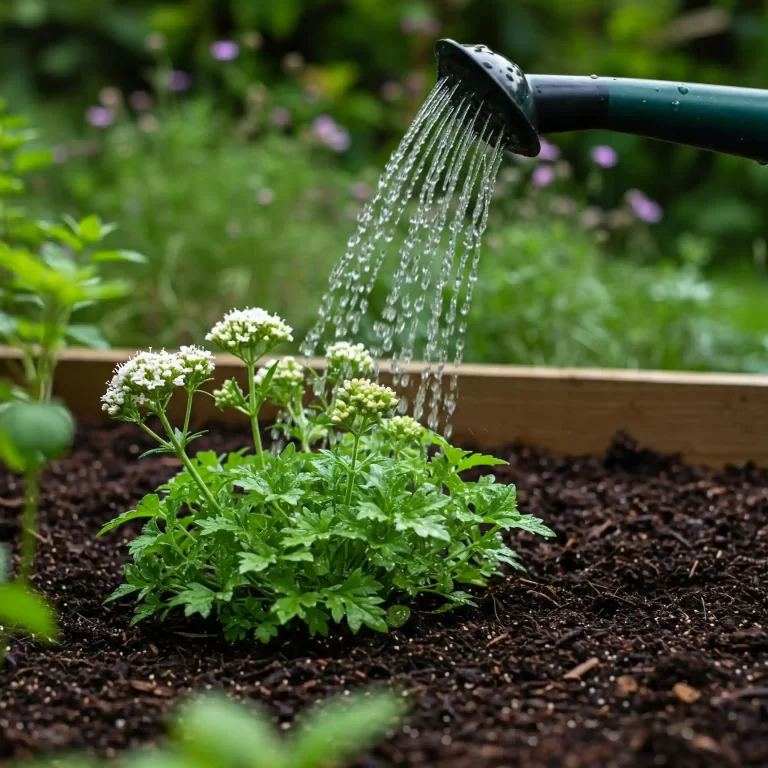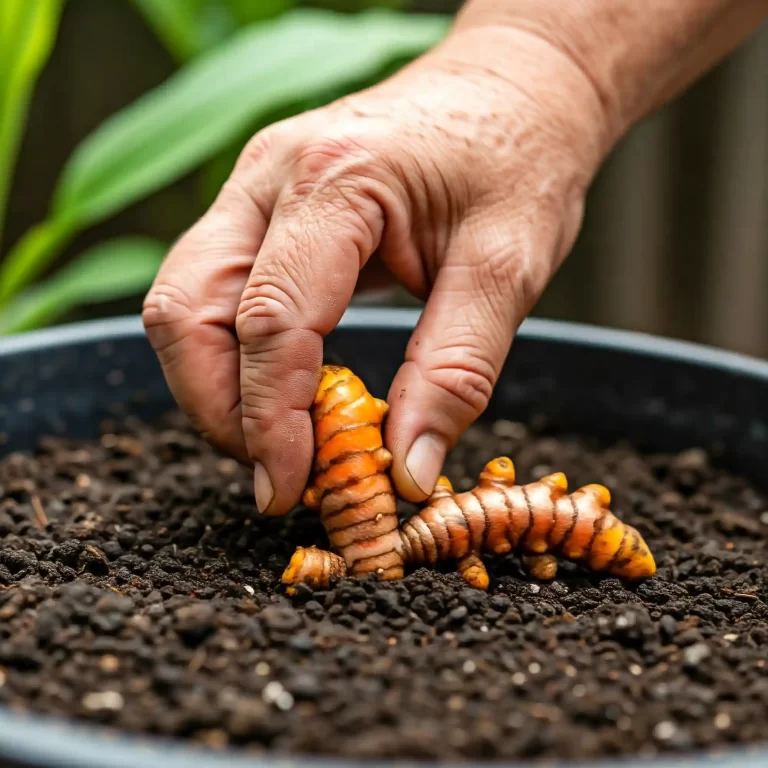Have you ever been captivated by a plant with a rich history and unique growing requirements? I know I have. Many gardeners are looking for something different to cultivate, a plant that offers both visual appeal and a story to tell. But often, finding reliable information on cultivating less common plants can be a real challenge. You might find scattered details online, but a comprehensive guide that walks you through the entire process can be hard to come by. This can lead to frustration, failed attempts, and a feeling that you’re just not “green-thumbed” enough for these special plants. Well, I’m here to tell you that growing unique plants like the Thunder God Vine is entirely within your reach. This comprehensive guide will provide you with the knowledge and practical steps you need to cultivate this fascinating vine successfully. I’ve spent years cultivating various plants, and I’m eager to share my insights with you.
Learning how to grow Thunder God Vine herbs can be a rewarding experience for any gardener. This fascinating vine, scientifically known as Tripterygium wilfordii, has a rich history, particularly in Traditional Chinese Medicine (TCM). It’s important for me to emphasize from the outset that this guide focuses exclusively on cultivation techniques. I will not be providing any medical advice or discussing the medicinal properties of the plant. My goal is to equip you with the horticultural knowledge you need to nurture this unique vine in your own garden. There’s a growing interest, I’ve noticed, in cultivating unusual and historically significant plants, and I believe that with the right guidance, you can successfully add Thunder God Vine to your collection. In this guide, I will share practical advice, drawn from my own experiences and research, to help you understand the specific needs of this plant. From propagation to ongoing care, I’ll cover everything you need to know. Let’s embark on this gardening adventure together!
Understanding Thunder God Vine (Tripterygium wilfordii)
Let’s delve deeper into the fascinating world of Thunder God Vine. It’s crucial to understand the plant’s background to provide it with the best possible care. While often referred to as a “herb,” Tripterygium wilfordii is, botanically speaking, a woody, deciduous vine. This distinction is important because it influences how we approach its cultivation. You’ll find that its growth habits and needs are more akin to other vining plants than to your typical garden herbs.
Originating from East Asia, specifically regions of China, Korea, and Japan, Thunder God Vine has adapted to specific environmental conditions. This knowledge is key to replicating its ideal growing environment in your own garden. It thrives in areas with moderate climates, often found in woodland edges and thickets. This means it prefers dappled sunlight or partial shade, mimicking the filtered light it receives under the canopy of trees. I’ve found that trying to replicate these natural conditions is one of the most important things for success.
When fully mature, this vigorous vine can reach impressive lengths, often climbing to 10 feet or more. It uses tendrils to twine around supports, so providing a trellis, fence, or other structure is essential. Its deciduous nature means it will lose its leaves in the fall, entering a period of dormancy during the winter months. This is a natural part of its growth cycle, and you shouldn’t be alarmed when this happens. It’s a sign that the plant is preparing for the colder months.
The leaves of the Thunder God Vine are a vibrant green, typically oval or elliptical in shape, and have serrated edges. They provide a lush backdrop for the plant’s delicate white flowers, which appear in clusters during the late spring or early summer. These flowers, while not particularly showy, add to the plant’s overall charm. Following the flowering period, small, winged seed pods develop. These pods are another distinguishing characteristic of the vine.
Now, I must emphasize a very important point: Thunder God Vine contains compounds that can be toxic if ingested. This is not a plant to be used for self-medication. This guide is solely focused on the cultivation of the plant, and I strongly advise against using any part of it for medicinal purposes without the guidance of a qualified healthcare professional. I want you to be safe and informed. It’s important to handle the plant with care, especially if you have sensitive skin. I recommend wearing gloves when pruning or handling the vine.
Understanding these key characteristics—its botanical classification, origin, growth habits, and the important note about toxicity—will set you up for success in growing this unique vine. It’s always best to start with a good base of knowledge before diving into the practical aspects of cultivation.
How to Propagate Thunder God Vine
Let’s talk about starting new Thunder God Vine plants. There are two main ways you can propagate this vine: from seeds or from cuttings. Both methods have their own advantages and disadvantages, and I’ll walk you through each one so you can decide which is best for you. In my experience, starting from cuttings is often faster and more reliable, but growing from seed can be a fun and rewarding challenge.
From Seeds:
If you choose to start from seeds, the first step is sourcing them. It’s crucial to obtain your seeds from a reputable supplier. This will ensure that you’re getting viable seeds that are true to type. I’ve learned from experience that buying cheap seeds from unknown sources can often lead to disappointment. You might end up with seeds that don’t germinate or that produce plants that aren’t what you expected.
Once you have your seeds, you’ll need to mimic the natural conditions that trigger germination. Thunder God Vine seeds require a period of cold stratification. This means they need to be exposed to cold temperatures for a certain period to break their dormancy. You can do this by placing the seeds in a damp paper towel or some moist sand inside a sealed plastic bag and storing them in the refrigerator for about 2-3 months. I usually do this in the late winter so that I can start the seeds indoors in early spring.
After the stratification period, you can sow your seeds in a seed starting mix. This type of mix is light and well-draining, which is essential for preventing fungal diseases that can affect young seedlings. Sow the seeds about ¼ inch deep in small pots or seed trays. Keep the soil moist but not soggy, and provide consistent warmth. A heat mat can be helpful for maintaining the ideal soil temperature.
Germination can be a bit slow and erratic, so be patient. It can take anywhere from a few weeks to a couple of months for the seedlings to emerge. Once they do, provide them with plenty of light. A sunny windowsill or grow lights will work well. Keep the seedlings moist and fertilize them with a diluted liquid fertilizer once they have a few sets of true leaves.
From Cuttings:
Propagating from cuttings is a quicker way to get new plants. The best time to take cuttings is in the late spring or early summer when the vine is actively growing. Select healthy stems that are about 4-6 inches long. Make sure to use a clean, sharp cutting tool to prevent the spread of diseases.
Remove the lower leaves from the cutting, and dip the cut end in rooting hormone. This will encourage root development. Plant the cutting in a pot filled with a well-draining rooting medium, such as perlite or a mix of perlite and vermiculite.
Keep the rooting medium moist and provide high humidity. You can achieve this by covering the pot with a plastic bag or placing it in a propagator. Place the cutting in a warm, bright location, but avoid direct sunlight.
In a few weeks, the cutting should start to develop roots. You can check for roots by gently tugging on the cutting. If it resists, it has likely rooted. Once the roots are well-developed, you can transplant the cutting into a larger pot or directly into the garden.
Here’s a quick comparison of the two methods:
| Propagation Method | Pros | Cons |
| Seeds | Genetic diversity | Slow germination, requires stratification |
| Cuttings | Faster, more reliable | Less genetic diversity |
I hope this helps you get started with propagating your own Thunder God Vine.
How to Plant Thunder God Vine
Now that you have your young Thunder God Vine plants, whether from seed or cuttings, it’s time to get them established in their permanent home. Choosing the right location and preparing the soil properly are crucial steps for successful growth. I’ve learned that taking the time to do this right from the start will pay off in the long run with a healthy and vigorous vine.
Choosing the Right Location:
Thunder God Vine prefers a location that receives partial shade. This mimics its natural habitat in woodland edges, where it grows under the canopy of trees. While it can tolerate some sun, especially in cooler climates, too much direct sunlight can scorch the leaves, especially during the hottest part of the day. I recommend choosing a spot that receives morning sun and afternoon shade, or dappled sunlight throughout the day.
Soil is another important factor to consider. Thunder God Vine thrives in well-draining soil that is rich in organic matter. This type of soil provides the necessary nutrients while also allowing excess water to drain away, preventing root rot. If your soil is heavy clay or sandy, you’ll need to amend it before planting.
Soil Preparation:
To amend heavy clay soil, you can add compost, well-rotted manure, or other organic matter. This will improve drainage and aeration. For sandy soil, adding organic matter will help retain moisture and nutrients. I like to work the amendments into the soil to a depth of about 12 inches.
Before planting, it’s also a good idea to test your soil’s pH. Thunder God Vine prefers a slightly acidic to neutral pH, between 6.0 and 7.0. You can purchase a soil test kit at your local garden center to determine your soil’s pH. If your soil is too alkaline, you can amend it with sulfur or peat moss.
Planting Process:
Once you’ve chosen the right location and prepared the soil, it’s time to plant your Thunder God Vine. Dig a hole that is slightly larger than the root ball of your plant. Gently remove the plant from its container and loosen any circling roots.
Place the plant in the hole, making sure that the top of the root ball is level with the surrounding soil. Backfill the hole with soil and1 gently firm it around the base of the plant. Water thoroughly after planting.
Supporting the Vine:
As a vining plant, Thunder God Vine needs a support structure to climb on. This can be a trellis, fence, arbor, or even a sturdy tree. I recommend installing the support structure at the time of planting to avoid disturbing the plant’s roots later on.
When training the vine to climb, gently guide the tendrils towards the support structure. You may need to tie the vine to the support with soft twine or plant ties. Once the vine starts to climb on its own, you can remove the ties.
By following these planting and site preparation tips, you’ll provide your Thunder God Vine with the best possible start, setting the stage for vigorous growth and a thriving addition to your garden.
How to Care for Your Thunder God Vine
Once your Thunder God Vine is planted, consistent care is essential to ensure its health and vigorous growth. I’ve found that regular attention to watering, fertilizing, pruning, and pest control will keep your vine thriving for years to come.
Watering:
Proper watering is crucial, especially during the first year as your vine establishes its root system. Water deeply and regularly, especially during dry periods. However, it’s essential to avoid overwatering, as this can lead to root rot, a serious problem for Thunder God Vine. I recommend allowing the top inch of soil to dry out between waterings. You can check this by inserting your finger into the soil. If it feels dry to the touch, it’s time to water.
Fertilizing:
Thunder God Vine benefits from regular fertilization, especially during the growing season (spring and summer). I recommend using a balanced fertilizer, such as a 10-10-10 or a 20-20-20, diluted to half strength. Apply the fertilizer every 4-6 weeks. Avoid fertilizing during the winter months when the plant is dormant.
Pruning:
Pruning is essential for shaping your vine and controlling its growth. It also helps to improve air circulation and prevent diseases. The best time to prune Thunder God Vine is in late winter or early spring, before new growth begins. Remove any dead, damaged, or crossing branches. You can also prune to control the size and shape of the vine.
Pest and Disease Management:
While Thunder God Vine is relatively pest and disease-free, there are a few problems to watch out for. Spider mites can be a common pest, especially during hot, dry weather. You can control spider mites by spraying the vine with a strong stream of water or by using an insecticidal soap. Root rot can be a problem if the soil is not well-draining or if the plant is overwatered. To prevent root rot, make sure to plant your vine in well-draining soil and avoid overwatering.
Winter Care:
In colder climates, Thunder God Vine may need some winter protection. In the fall, after the leaves have fallen, you can mulch around the base of the plant with a layer of straw or leaves. This will help to protect the roots from freezing temperatures. In very cold climates, you may need to protect the vine by wrapping it in burlap or moving it to a sheltered location.
By following these care tips, you can ensure that your Thunder God Vine thrives and provides you with years of enjoyment.
Addressing Common Growing Problems
Even with the best care, you might encounter some challenges while growing Thunder God Vine. I’ve certainly had my share of learning experiences over the years! Being able to identify and address these problems promptly is key to keeping your vine healthy and thriving. Let’s discuss some common issues and how to tackle them.
Troubleshooting Common Issues:
- Yellowing Leaves: One of the most common problems I see is yellowing leaves. This can be caused by several factors, including overwatering, underwatering, nutrient deficiencies, or pest infestations. If you notice your vine’s leaves turning yellow, check the soil moisture first. If the soil is consistently soggy, you’re likely overwatering. Allow the soil to dry out a bit between waterings. If the soil is bone dry, you’re underwatering. Water deeply and regularly, but make sure the soil is well-draining. A lack of nutrients, particularly nitrogen, can also cause yellowing leaves. Applying a balanced fertilizer can help correct this. Finally, check the leaves carefully for signs of pests, such as spider mites or aphids.
- Wilting: Wilting can also be a sign of both overwatering and underwatering. If the soil is soggy, the roots may be rotting, preventing the plant from taking up water. If the soil is dry, the plant is simply lacking moisture. Adjust your watering accordingly. Wilting can also be caused by transplant shock, especially if the plant’s roots were disturbed during planting. Providing consistent moisture and some shade can help the plant recover.
- Lack of Growth: If your Thunder God Vine isn’t growing as vigorously as you’d expect, there could be several reasons. Insufficient sunlight is a common culprit. Remember, this vine prefers partial shade, but it still needs some sunlight to thrive. Make sure it’s not planted in a completely shaded location. Nutrient deficiencies can also stunt growth. Fertilize regularly during the growing season. Finally, check for rootbound conditions. If the plant’s roots are circling tightly around the inside of the pot, it’s time to transplant it into a larger container.
Pest and Disease Identification and Treatment:
- Spider Mites: These tiny pests are difficult to see with the naked eye, but they leave behind fine webbing on the leaves. They suck plant sap, causing the leaves to become speckled, yellow, and eventually drop off. You can control spider mites by spraying the vine with a strong stream of water, using insecticidal soap, or introducing beneficial predatory mites.
- Root Rot: This fungal disease is caused by overwatering and poor drainage. The roots become brown and mushy, and the plant wilts and eventually dies. To prevent root rot, make sure to plant your vine in well-draining soil and avoid overwatering. If you suspect root rot, you can try to save the plant by removing the affected roots and repotting it in fresh, dry soil.
Addressing Environmental Stressors:
- Extreme Heat: During periods of extreme heat, Thunder God Vine can suffer from heat stress. The leaves may wilt or scorch. Providing some shade during the hottest part of the day can help prevent this. Make sure to water deeply and regularly during hot weather.
- Cold Damage: While Thunder God Vine is relatively cold-hardy, young plants can be susceptible to frost damage. In colder climates, protect the plant by mulching around the base with a thick layer of straw or leaves. You can also wrap the vine in burlap for extra protection.
By being observant and addressing these potential problems promptly, you can keep your Thunder God Vine healthy and ensure it thrives in your garden. I’ve found that early detection and appropriate action are key to successful cultivation.
Frequently Asked Questions (FAQ)
I’ve compiled a list of frequently asked questions that I often receive about growing Thunder God Vine. I hope these answers will further clarify any lingering questions you may have.
- How often should I water my Thunder God Vine plant?
Water deeply when the top inch of soil feels dry to the touch. Avoid overwatering, as this can lead to root rot. - What is the best soil for growing Thunder God Vine?
Thunder God Vine prefers well-draining soil that is rich in organic matter. A slightly acidic to neutral pH (6.0-7.0) is ideal. - How to care for Thunder God Vine in cold climates?
Mulch around the base of the plant in the fall to protect the roots. In very cold climates, you may need to wrap the vine in burlap or move it to a sheltered location. - How to propagate Thunder God Vine from seed successfully?
Seeds require cold stratification for 2-3 months before sowing. Sow them in a seed starting mix and keep them moist and warm. - What are common pests and diseases of Thunder God Vine?
Spider mites and root rot are the most common problems. Use appropriate control methods, such as insecticidal soap for spider mites and well-draining soil to prevent root rot. - Where to plant Thunder God Vine for optimal growth?
Choose a location that receives partial shade. Avoid planting in full sun, especially in hot climates. - How to train and support a growing Thunder God Vine vine?
Provide a trellis, fence, or other support structure for the vine to climb on. Gently guide the tendrils towards the support. - How to protect Thunder God Vine from frost damage in winter?
Mulch around the base of the plant and wrap the vine in burlap if necessary. - What are the light requirements for growing Thunder God Vine indoors?
If growing indoors, provide bright, indirect light. - How to grow Thunder God Vine organically in my garden?
Use organic fertilizers and pest control methods. - How to grow Thunder God Vine in containers on a patio?
Choose a large container with drainage holes. Use a well-draining potting mix and provide a support structure for the vine to climb on.
I believe that by addressing these common questions, I can empower you with the knowledge and confidence to successfully cultivate this unique and rewarding vine.
Conclusion
Growing Thunder God Vine can be a fulfilling endeavor for any gardener, offering a unique blend of beauty and historical significance. As we conclude this comprehensive guide, let’s recap the key steps to cultivating this fascinating vine.
From understanding its botanical classification as a woody vine to replicating its native East Asian habitat, we’ve explored the essential elements for successful cultivation. We’ve delved into the intricacies of propagation, whether you choose the patient route of starting from seeds or the quicker method of rooting cuttings. We’ve also covered the importance of site selection, soil preparation, and providing a suitable support structure for this climbing vine.
Furthermore, we’ve discussed the ongoing care your Thunder God Vine will need, from regular watering and fertilizing to pruning and pest control. We’ve also addressed common growing problems and how to troubleshoot them, empowering you to tackle any challenges that may arise.
Remember, this guide focuses solely on the cultivation of Thunder God Vine. While this plant has a rich history in Traditional Chinese Medicine, this guide does not provide any medical advice. Always prioritize safety and consult with a qualified healthcare professional before using any plant for medicinal purposes.
Now, armed with this knowledge, you’re well-equipped to embark on your own Thunder God Vine growing journey. Embrace the process, observe your plant closely, and adapt your care as needed. With a little patience and attention, you’ll be rewarded with a thriving vine that adds a touch of unique beauty to your garden.
I encourage you to share your experiences, ask questions, and connect with fellow gardeners in the comments below. Let’s cultivate a community of passionate growers who appreciate the unique beauty and history of the Thunder God Vine.




